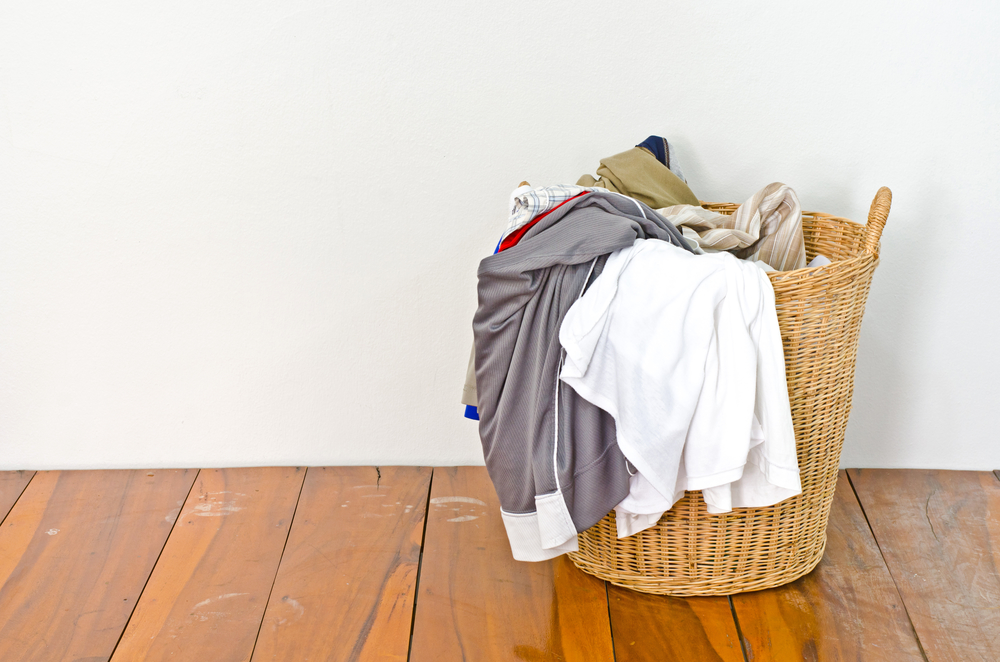

We all have a favorite item of clothing we wish would last forever—the t-shirt from an incredible concert, that sweater grandma gave you, or the swimsuit you bought at a little boutique in France. But stains, tears, and worn spots can limit any garment’s lifespan—and laundering your clothes only speeds up the process.
If you’re tired of shirts fading and workout clothes stretching into flimsy wrecks, tweak your laundry habits to give them longer lives. To do that, you need to know why clothes fade and break down in the first place.
Know your fabrics
Different garments wear out for different reasons. “There are two really different families of fibers,” says Lana Hogue, a garment manufacturer with 25 years of experience, who teaches classes at Garment Industry 411. “There are natural fibers, and there are synthetic fibers. And they all need different care.” Natural fibers include cotton, linen, and wool, while synthetic fibers encompass nylon, polyester, spandex, and other heavily-processed fabrics. Each category is sensitive to different parts of the laundering process.
Synthetic fibers, found most often in sportswear, are particularly sensitive to heat and oil. “The heat from the dryer can cook a lot of garments,” Hogue says. Things like running shorts and spandex pants will lose their structure when exposed to a hot dryer too often.
Some synthetic-fiber clothes—like women’s swimsuits—are particularly vulnerable. It only takes one trip to the dryer to potentially ruin these garments. In addition, suits can break down more quickly if you use a lot of sunscreen, thanks to the oils in the lotion.
Cotton holds its shape better than synthetic fibers, but it isn’t nearly as colorfast: The water and friction of a washer will cause its hues to fade. To maintain color longer, Hogue likes blends, especially for dark items that can get that frosty-on-the-shoulders look. “When I’m looking for a black shirt, I will look for a cotton-polyester blend. Any amount of polyester is going to help retain the color in that black.”
In fact, blends get the best of both worlds. In addition to helping maintain color, the polyester will prevent the cotton from shrinking too much. The cotton, meanwhile, will keep the polyester from breaking down as easily in the dryer.
If you know what type of fabric your clothing is made out of, you can do a much better job of playing to its strengths—and weaknesses.
Read the care instructions (seriously)
Almost every item of clothing has a tag that tells you exactly how to care for it, and you should read it! (You probably already know this, but be honest: Do you really do it?) That tag will give you a really good idea of where to start, and what not to do, if you want that item to last as long as possible. If your tag only has symbols on it, this graphic from Primer explains what they all mean.
Hogue notes that most of these instructions err on the conservative side, so you can usually get away with slightly harsher practices. However, your clothes may wear out faster, so it’s best to be cautious. And there’s one instruction you should always follow: Items that say “dry clean only” absolutely must be dry cleaned.
In addition, Hogue says, “There is no difference between machine-wash gentle and hand washing. Unless you have a very aggressive washing machine, you can throw a hand-wash garment into your washing machine on gentle cycle, and it’s usually fine.” Just be careful of delicate clothing with straps or other parts that can get wrapped around other items in the wash. You might want to zip those items into a mesh bag for delicates to keep them in check.
Take extra care of the things you want to last
So you’ve looked at the tag, you’ve noted the fabric type and its instructions, but you still want to make absolutely sure that item lasts as long as possible. Hogue says the following tips go a long way.
- Launder less often: “I don’t launder my dark clothes as often as I wash my light clothes because they just don’t show dirt as much,” she says. Natural fabrics will lose color faster the more often they’re washed, so if you can get away with laundering something less often—like if you wear an undershirt with it—do so. For items worn against the skin, like jeans, she says you can put them in the freezer to kill germs without doing a load of laundry.
- Wash colors inside out: When you do go to wash those colorful cotton garments, first reverse them. Color loss comes from water and friction, and by turning an item inside-out, you can at least reduce the friction portion of the equation. This step is less important for synthetic fabrics.
- Avoid heat (especially for synthetics): For synthetic fabrics, heat is the number one enemy. Even items made of a cotton-polyester blend shouldn’t go into the dryer on high heat. “The only things that can withstand high heat in the dryer are linen, cotton, and hemp,” says Hogue. Everything else should dry on low heat, or better yet, on a clothesline. Heat can also cook in stains.
- Try line drying: “If you can line-dry all of your clothes, they’ll last so much longer,” Hogue stresses—but she admits that this is unrealistic for most of us. So instead of giving up and tossing everything in the dryer, give that extra bit of care to the few items you really care about preserving. “If you have favorite clothes that you never want to wear out, always line dry them,” she says. “They’ll last a lot longer.”